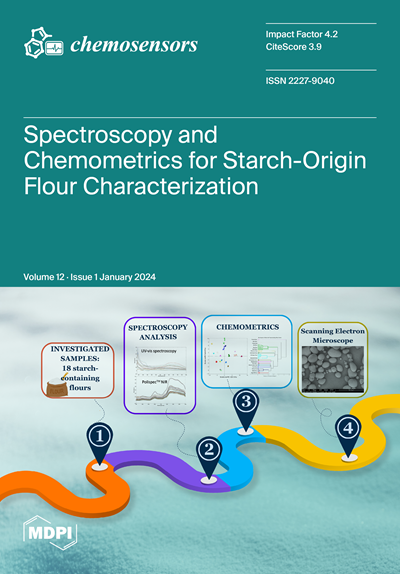Spectroscopy and Chemometrics for Conformity Analysis of e-Liquids: Illegal Additive Detection and Nicotine Characterization
IF 3.7
3区 工程技术
Q2 CHEMISTRY, ANALYTICAL
引用次数: 0
Abstract
Vaping electronic cigarettes (e-cigarettes) has become a popular alternative to smoking tobacco. When an e-cigarette is activated, a liquid is vaporized by heating, producing an aerosol that users inhale. While e-cigarettes are marketed as less harmful than traditional cigarettes, there are ongoing concerns about their long-term health effects, including potential lung damage. Therefore, it is essential to closely monitor and study the composition of e-liquids. E-liquids typically consist of propylene glycol, glycerin, flavorings and nicotine, though there have been reports of non-compliant nicotine concentrations and the presence of illegal additives. This study explored spectroscopic techniques to examine the conformity of nicotine labeling and detect the presence of the not-allowed additives: the caffeine, taurine, vitamin E and cannabidiol (CBD) in e-liquids. A total of 236 e-liquid samples were carefully selected for analysis. Chemometric analysis was applied to the collected data, which included mid-infrared (MIR) and near-infrared (NIR) spectra. Supervised modeling approaches such as partial least squares-discriminant analysis (PLS-DA) and soft independent modeling of class analogy (SIMCA) were employed to classify the samples, based on the presence of nicotine and the targeted additives. This study demonstrates the efficacy of MIR and NIR spectroscopic techniques in conjunction with chemometric methods (SIMCA and PLS-DA) for detecting specific molecules in e-liquids. MIR with autoscaling data preprocessing and PLS-DA achieved 100% classification rates for CBD and vitamin E, while NIR with the same approach achieved 100% for CBD and taurine. Overall, MIR combined with PLS-DA yielded the best classification across all targeted molecules, suggesting its preference as a singular technique.用于电子液体符合性分析的光谱学和化学计量学:非法添加物检测和尼古丁定性
吸食电子香烟(电子烟)已成为一种替代吸烟的流行方式。当电子烟被激活时,液体通过加热被蒸发,产生气溶胶并被使用者吸入。虽然电子烟在市场上被宣传为比传统香烟危害更小,但人们对其长期健康影响,包括潜在的肺部损伤一直存在担忧。因此,密切监测和研究电子烟液的成分至关重要。电子烟液通常由丙二醇、甘油、香精和尼古丁组成,但也有尼古丁浓度不达标和存在非法添加剂的报道。本研究利用光谱技术来检查尼古丁标签的合规性,并检测电子烟中是否存在不允许的添加剂:咖啡因、牛磺酸、维生素 E 和大麻二酚 (CBD)。我们精心挑选了 236 个电子液体样本进行分析。收集到的数据包括中红外(MIR)和近红外(NIR)光谱,对这些数据进行了化学计量分析。根据尼古丁和目标添加剂的存在情况,采用了偏最小二乘判别分析(PLS-DA)和类类比软独立建模(SIMCA)等监督建模方法对样品进行分类。这项研究证明了将近红外和近红外光谱技术与化学计量学方法(SIMCA 和 PLS-DA)相结合检测电子液体中特定分子的功效。采用自动缩放数据预处理和 PLS-DA 的近红外光谱对 CBD 和维生素 E 的分类率达到了 100%,而采用同样方法的近红外光谱对 CBD 和牛磺酸的分类率也达到了 100%。总体而言,MIR 与 PLS-DA 结合在一起,在所有目标分子中产生了最好的分类结果,这表明它更适合作为一种单一技术。
本文章由计算机程序翻译,如有差异,请以英文原文为准。
求助全文
约1分钟内获得全文
求助全文
来源期刊

Chemosensors
Chemistry-Analytical Chemistry
CiteScore
5.00
自引率
9.50%
发文量
450
审稿时长
11 weeks
期刊介绍:
Chemosensors (ISSN 2227-9040; CODEN: CHEMO9) is an international, scientific, open access journal on the science and technology of chemical sensors published quarterly online by MDPI.The journal is indexed in Scopus, SCIE (Web of Science), CAPlus / SciFinder, Inspec, Engineering Village and other databases.
 求助内容:
求助内容: 应助结果提醒方式:
应助结果提醒方式:


